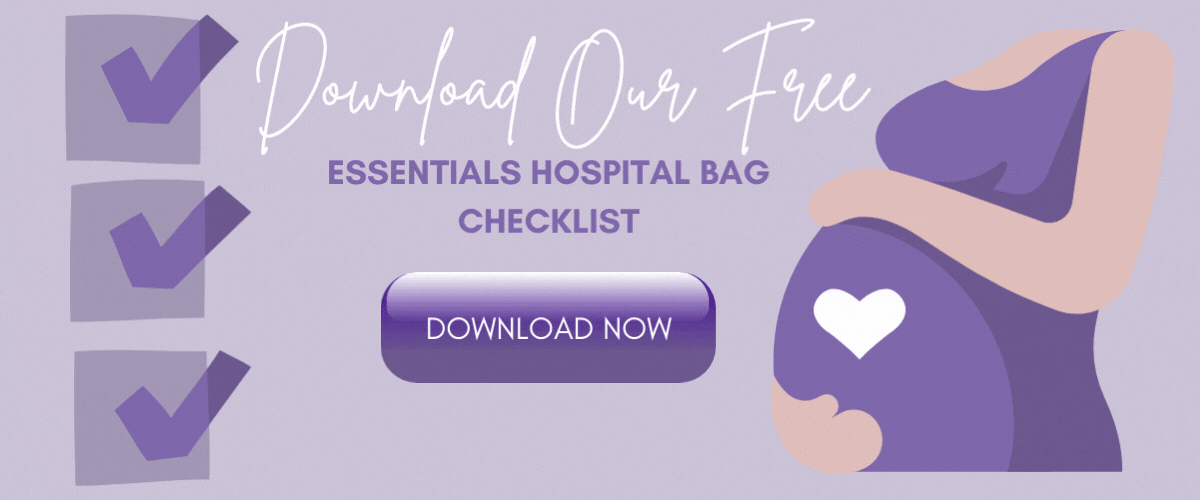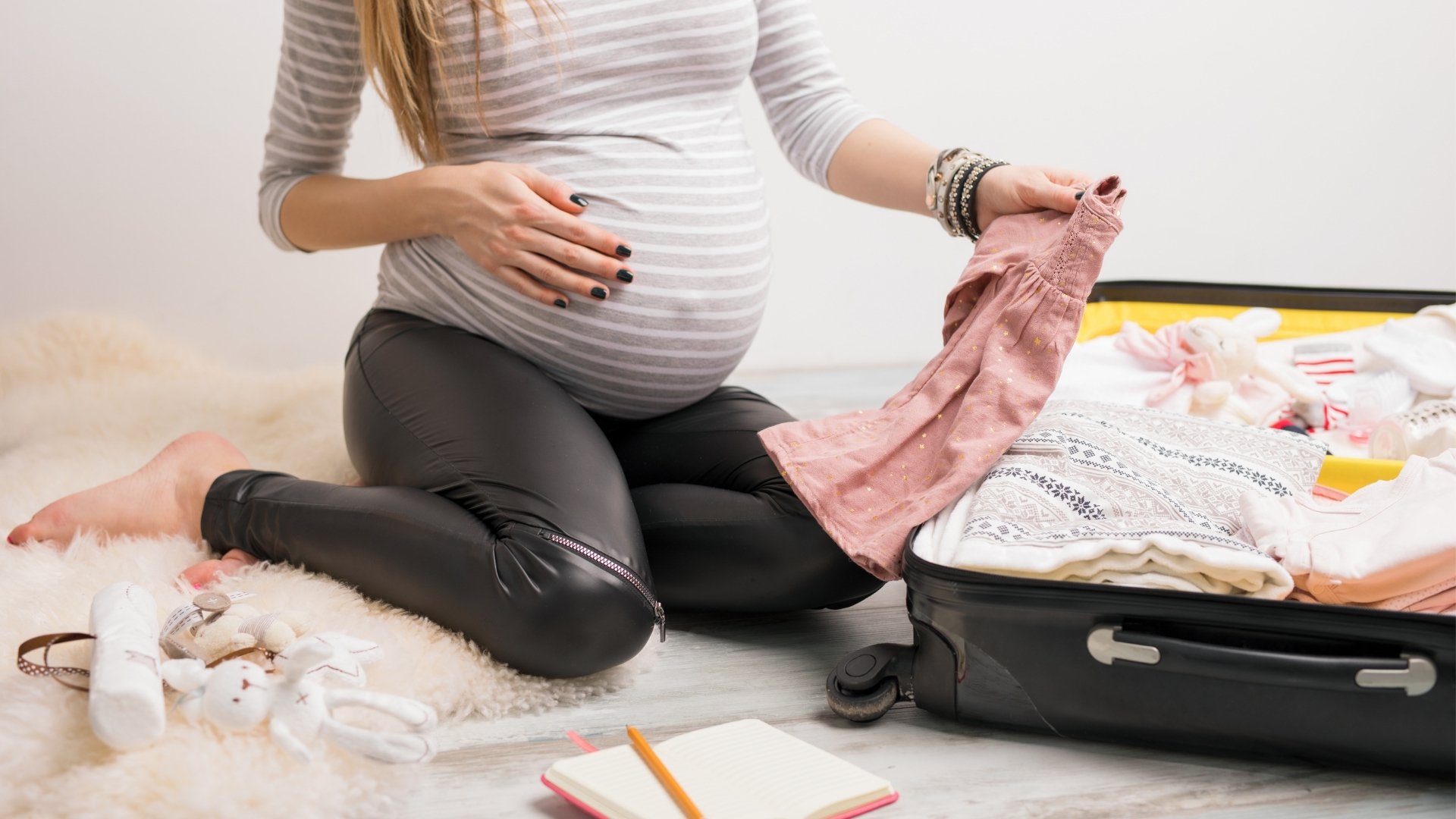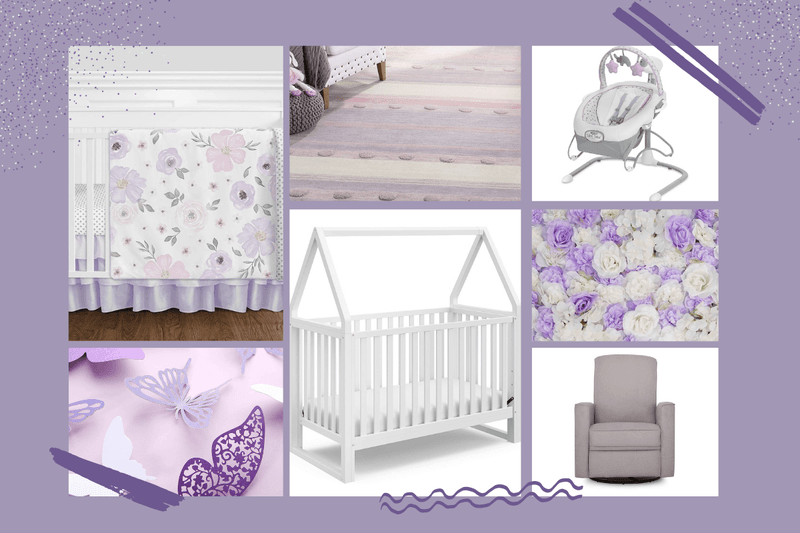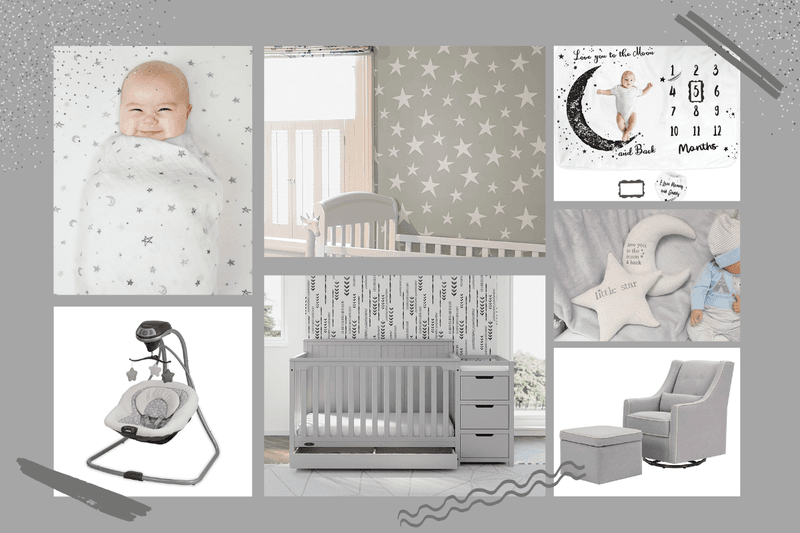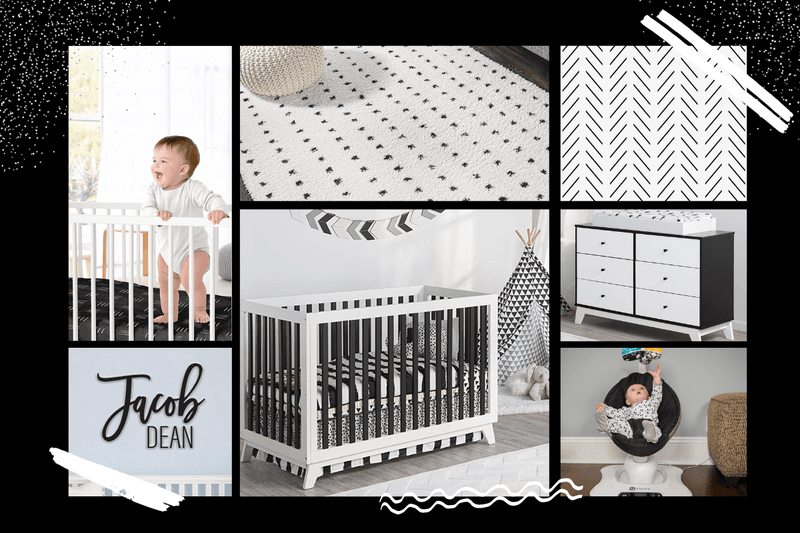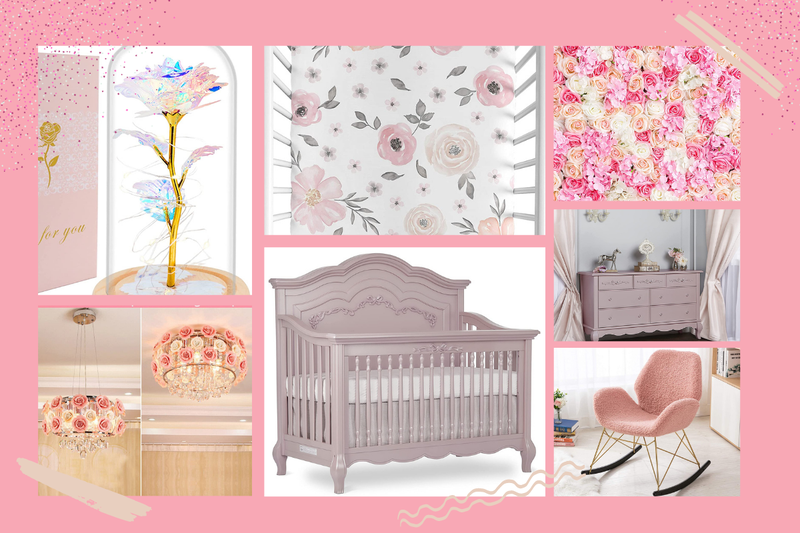As the third trimester of your pregnancy begins, your baby suddenly becomes much more real. For new mothers, in particular, this can be a time of excitement mixed with panic: You are actually going to be coming home with a tiny person who is completely dependent on you. This can lead to a lot of questions!
- What does Baby need?
- Have you done everything you can to make your home a safe environment? Do you know enough about car seat safety?
- What is essential to pack in your hospital bag?
- Do you have a birthing plan?
The third trimester really brings home the reality of being a parent. Nearing your due date may feel more like a race to accomplish all the essential preparations of motherhood rather than approaching a celebratory event.
Many women experience pregnancy nesting in preparation for the impending arrival. You may find a burst of energy in the third trimester combined with a desire to set up the nursery just so, baby-proof your home, and make sure absolutely everything is ready to go.
If only there was a guide to ensure you have the answers to all your questions and a list of all you need to have and do and figure out and finish…We got you. What, exactly, is “everything,” though? This ultimate guide will help you figure out everything you need to have and all the things you need to be accomplished by the end of the third trimester— so all you have to worry about is making it to the hospital.
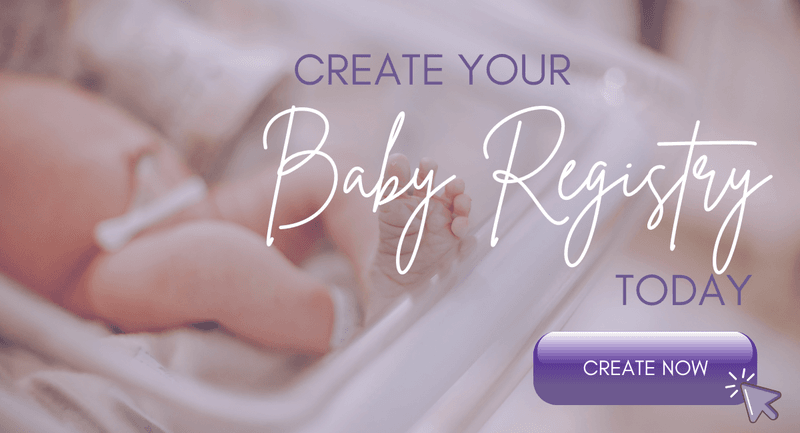
Nearing Your Due Date: What to Expect from the Third Trimester
The third trimester begins at week 28 and lasts until week 40 or your delivery. During this time, you will see rapid growth of your belly. For the majority of women, the morning sickness, extreme exhaustion, and other unfortunate side effects of early pregnancy have gone away.
Growing Tired
Unfortunately, exhaustion is probably going to make a grand return in the third trimester. The trade-off for no morning sickness is discomfort or flat-out pain in your back and joints (particularly the hips and pelvis). You may find it absolutely impossible to find a comfortable sleeping position, making nights a difficult time.
Do not feel bad about making time for an afternoon nap – you’re making life, and you deserve the rest! Even a few minutes of relaxing can help. Try taking a nice bath with relaxing scents, candles, or bath bombs, just before bed. Aim for an earlier bedtime, take it easy on yourself, and go for a gentle walk each day. Pregnancy pillows are also a great option for finding a comfortable position at night despite the constant discomfort of your body.
Changes in Your Breasts
Your breasts may start developing some noticeable changes, too. Most women experience some growth during pregnancy, but even your nipples may grow or change as they prepare for breastfeeding (whether that’s what you intend to do or not). Colostrum is the first, most nutrient-rich milk your breasts produce, and it may begin to leak during the third trimester.
Invest in a sleep bra – or just a comfortable sports bra – to provide support without the discomfort. You might go ahead and get some nursing bras if you plan to breastfeed. If you have a lot of trouble leaking, you can invest in some disposable or reusable breast pads.
Changes Down There
Something you may not be expecting is the change in or development of vaginal discharge. No one wants to talk about it, but it can tell you some surprising things. If you notice any pink or red discharge, this can indicate spotting or bleeding. A distinct odor, change in texture, or colors that are anything but variations of milky white also merit a call to the doctor. These can be indicative of vaginitis and may need your doctor’s expert eye.

Stretch Marks
Pregnant women experience stretch marks differently. Some lucky women do not develop any, thanks to genetics or as a result of staying hydrated and taking preventative measures from the get-go. Even the time when stretch marks appear may vary. Some women begin to develop them in the second trimester, but they may not be noticeable until into the third trimester for others.
Many oils, lotions, butters, and creams exist to help prevent the development or reduce the appearance of stretch marks. You can even use belly masks created to fit more or less pregnant bellies. The most effective method of reducing stretch marks, however, is to stay hydrated, granting your skin the elasticity it needs to grow with your baby.
Your Baby
When the third trimester begins, your baby should weigh just over two pounds and measure about ten inches. Over the rest of your pregnancy, you can expect your baby to grow about half a pound and half an inch each week! Remember, babies come in all different sizes, and even if your baby is not “average,” he can still be perfectly healthy.
A lot of development has happened during the last few months. Baby starts opening her eyes, the pupils begin responding to light, tiny toenails develop, and bones (aside from the skull) become much firmer. Your baby will become more active, and you may feel like a tiny circus act is going on in your uterus. It’s just Baby, practicing moving all those developing muscles.
In fact, your baby can even make grasping motions with those tiny hands in the third trimester. Around 34 weeks, babies start turning around to their heads in position to make their grand entry into the world.
Signs of Impending Labor
At 40 weeks, your baby is fully developed, and you are looking at your due date. If you watch it come and go with no sign of going into labor, do not worry – this is perfectly normal and very common, especially for first-time mommies. Your due date is an estimate, not a set determination of when the Baby will appear. As you begin nearing your due date, however, you will probably notice a few more changes in your body, signifying labor is close.
Some of these changes may mean you are likely to go into labor very soon. Others are just common things that happen during the end of your pregnancy and do not necessarily mean you are going into labor this week.
Signs you are actively beginning the process of labor at the end of the third trimester include:
- Strong contractions that occur regularly
- Discharge that is reddish or brownish in color (called “the bloody show”)
- A rush of fluid indicates your water has broken
- Consistent pain in your low back and belly
Signs You Are Nearing Your Due Date
You may experience other things that might suggest you are getting close to labor but are really just likely to occur as you begin nearing your due date in the third trimester.
Braxton-Hicks contractions, for example, are also called false labor. They do not occur regularly like true contractions and may happen for weeks before true labor begins. Braxton-Hicks contractions are one of your body’s ways to prepare for delivery. You may also notice additional vaginal discharge, and your cervix can begin thinning and widening.
Additionally, your baby may drop further into your pelvis. This “lightening” is your baby’s preparation for labor. It might occur weeks or days before your body begins the full process.
Many women also experience pregnancy nesting in the last few weeks of the third trimester. Despite feeling utterly exhausted, you may find you have sudden spurts of energy combined with a need to make your home ready for your new arrival.
Pregnancy Nesting
Pregnancy nesting in the third trimester can be a really fun experience. Essentially, pregnancy nesting is an innate need to prepare for your baby. Most experts agree that exactly what causes it is not definitively known. However, it is likely changing pregnancy hormones combined with a need to have some control over your life. When you are pregnant, you may feel like you have very little control over your body— you cannot eat whatever you want; you have to sleep in the same position every night, and your emotions are running rampant for what feels like no reason.
Furthermore, pregnancy is a time of enormous change, and your baby— while a wonderful, beautiful addition – will undeniably impact the rest of your life. You may already know exactly how a new baby will change things. You may feel like you know big changes are coming, but you may not comprehend just how. Regardless, this can cause some feelings of anxiety, no matter how insanely happy you are to meet the newest member of your family.
Third-trimester pregnancy nesting could just be the result of those hormones, or it might be a subconscious means of regaining the control you feel you lack. No matter what the cause, take advantage of the need to nest! This is the perfect time to put the finishing touches on the nursery, pack your hospital bag, quadruple check the car seat installation, and make sure you have all the things both you and your baby are going to need to make it through the first few months.
Things to Avoid
Flinging yourself into the fun of painting and decorating the baby’s room, cleaning your home, and freezing meals for those first crazy weeks when you get home from the hospital is great (and a great way to spur your excitement even further). However, you also have to remember you are in your third trimester, and safety is extremely important.
Heights and Reaching
Ultimately, you can rely on common sense to keep you and your baby safe. While you are decorating and cleaning, bring in a partner or friend to handle the high stuff. Avoid reaching too far, and do not climb or get on high things. Stay off ladders, chairs, and other items intended to reach above your head. You may have no problem normally, but during pregnancy – especially in the third trimester when your belly is so much larger than normal – your center of gravity feels different than normal.
Fumes and Chemicals
You should also be especially careful about chemical fumes. If you intend to paint the nursery, open the windows, make sure the door to the rest of the house is open, and take breaks. If you begin a full house cleaning, the same is true for any cleaning products you use. Avoid mixing chemicals, ventilate the area you are cleaning, and double-check the safety of any chemicals you use. Even mild chemicals call for plenty of ventilation and some rubber gloves. You can also opt for more natural cleaning products, like baking soda, vinegar, and lemon juice.
Heavy Lifting
Lifting too much is also a big no: No in early pregnancy and no in the third trimester. Every situation is different, however, just as every woman has different strength levels. A good standard is not to lift more than twenty pounds. Weight limits also depend on if you are lifting from the floor or a table, how high you have to lift the object (is it going to waist height or above your head?), how far you have to carry the object before you can set it down, and how in shape you are before or during pregnancy. Bring someone else in to do your heavy lifting, or find alternate ways to move things (such as using a dolly to get something to a different room).
Overwork and Under-Hydration
Finally, do not overwork yourself. Take frequent breaks. If you feel tired, stop for the day (or at least a half-hour). Stay hydrated. This is always important during pregnancy and the postpartum period, and the third trimester is no different. When you are working hard, drinking plenty of water is even more important. The standard recommendation is to drink at least eight to twelve cups of water every day during pregnancy. Stick to the higher end of this recommendation when you are putting in a hard day of work.
What Does Baby Need?
Now that you know what to expect from the end of your pregnancy and how to go about pregnancy nesting safely, let’s talk about what you need to have to be prepared to bring your baby home. There are only a few absolute essentials when it comes to what Baby needs. Of course, there are a lot of things that make the mom’s life a lot easier – or are just too cute to pass up. The most important things you need to have before you bring your baby home include a safe place for your baby to sleep, things to keep your baby fed, warm, and clean, and a safe way to transport your baby (but more about that later).
If you have the space and financial resources, there are a variety of items you can also include on your list of what Baby needs. We’ve compiled this list of the most essential items for each of the most important parts of a newborn’s life, followed by additional items that can make life much easier and more fun when you bring your new baby home. Finally, let’s talk about some of the cutest (not to mention customizable) things you can add to your nursery to really make it special for your baby.
Nursery Essentials for Pregnancy Nesting
When it comes to newborns, the sleep setup does not have to be incredibly fancy or expensive. The most important things are that your baby cannot roll out of it, and it does not have any fluffy bedding, pillows, or stuffed animals.
Nursery Furniture
A bassinet is probably the most affordable option and takes up the least amount of space. They are also a portable option – great for napping in different rooms, taking visits to see family or even Baby’s first camping trip.
Pack and plays or play yards are a great alternative to a standard bassinet. They are less expensive than a crib, lighter, and more portable, but offer more room than a bassinet. Pack and plays in particular often have a bassinet and changing table that attaches to the play yard, combining all of your baby’s necessary furniture in one smaller area.
Cribs, however, are a more traditional option. They are more stable and allow for more space as your baby gets bigger. By about three months, most babies have gotten too big to sleep comfortably in a bassinet. Cribs are great for over a year (or until your baby figures out how to climb out of it).
Some cribs also include a combination of essentials. For example, you might find one that has a changing table over storage for diapers, creams, and onesies. Other cribs convert into toddler beds with a few extra pieces once the crib becomes too small or your toddler is too good at escaping.
Diaper Changing
Changing tables can be a handy addition to the nursery as well. If you are short on space, small changing pads are a great way to have an area that is not the floor but does not take up a ton of room. Just lean it against Baby’s dresser or stick it inside the closet between uses.
Speaking of changing tables, diapers are also absolutely essential. Most babies grow so quickly, you won’t need many in a newborn size, but stocking up on every other size is a great idea. Some parents prefer cloth diapers. The recommended minimum is about 36 diapers (or roughly the amount you need to get through three days). This number changes depending on how frequently you do laundry and how often your baby needs to be changed, but this is a good starting point when you start stocking up in the third trimester.
You may think a diaper bag is one of those unnecessary things – how much do you really need to carry around for a quick trip to the store? A surprising amount, frankly. A good diaper bag is essential for making your life easier. For the first several months, you are sure to need to change your baby at the most unlikely of times. Most diaper bags come with special pockets for wet wipes, a thin pad to act as a surface cover to lay Baby on, and insulated pockets for an extra bottle or two of milk.
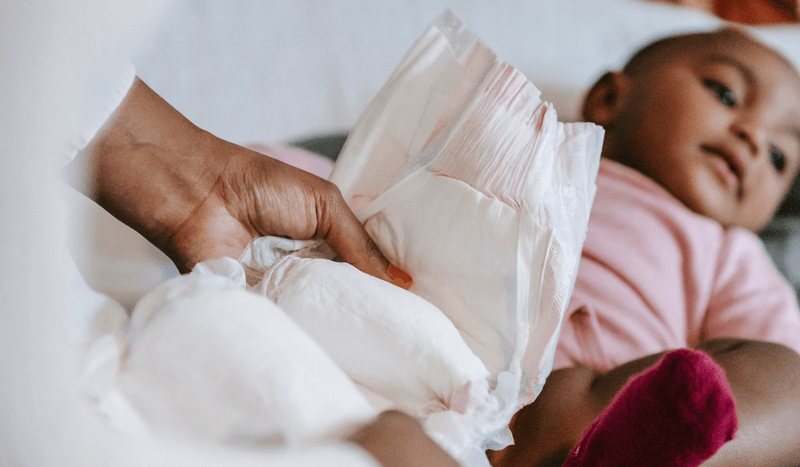
Feeding Time
By the third trimester, you have probably decided how you intend to feed your baby. Your plans to breastfeed, bottle-feed, or do both will change what products Baby needs a little bit. The most important thing to remember here is that fed is best, and whatever works best for you and your family and the best option for your baby.
Breastfeeding exclusive mothers, in truth, do not have to have any additional products. A nursing pillow can be helpful, however. Holding your baby in one position with no support for your arms can get very uncomfortable very quickly. Some parents (whether nursing or bottle feeding) also enjoy having a nursing chair in the nursery. This is a great way to keep your baby in the dark, calm, and quiet of the nursery for those midnight feedings. Nursing chairs are often very comfortable rocking chairs with arm support. You can also enjoy the cozy feeling of rocking your baby to sleep for naps and nighttime.
A breast pump is also nice to have, particularly if you plan to breastfeed exclusively and will be going back to work. Pumping can be difficult for your body to adjust to, but a nice one can make a big difference. Many insurance plans will cover at least part of the cost of a pump, so make sure to check with your insurance company before the end of the third trimester.
If your benefits do not include breast pumps, you cannot afford one, and you desperately need one, organizations like Women, Infants, and Children (WIC) provide rental pumps (and other benefits) for qualifying families.
If you plan to pump, use formula, or combine the two, bottles will be an absolute necessity as well. While inexpensive versions are totally fine, many babies spit up much more when drinking from a bottle because of the extra air they wind up swallowing. Bottles designed to limit air consumption while feeding can be gentler on your baby’s tummy – and on your burp cloths.
Burp cloths are another important addition to your collection of what newborn babies need. Some babies spit up very little, some quite a lot, and some for as long as a year. Plan to have enough to use a few each day.
Bottle warmers are an amazing way to reach the perfect temperature quickly. Microwaving bottles are discouraged, particularly because it heats unevenly. Bottle warmers are easy to use, even in the middle of the night while your newborn is bellowing and you are still half asleep.
Eventually, as your baby grows, you will begin introducing baby food into his diet. While a highchair is not an immediate necessity, it is a great item to include in your registry. Sippy cups, baby plates, and baby spoons will also be nice when the time comes to make the switch.
Baby’s Life
Ultimately, aside from a few onesies, socks, and mittens to prevent your newborn from scratching her face with those sharp little nails, blankets are a new parent’s best friend. They can be used for their intended purpose to keep your little one warm, of course, but using them to swaddle your baby is also an excellent trick for helping your baby fall asleep or calm down. Specific muslin swaddle blankets are often larger and made of more breathable material. They are easier to create a perfect swaddle with and great for the warmer months.
Tummy time is also going to be an important part of your baby’s life over the first few months. A thick blanket with a fun pattern is a great way to engage Baby. Tummy time mats are often more durable and may have interesting toys and additions to work on those motor skills.
Nursery Décor
As you begin searching for what Baby does need, you are certain to come across a variety of adorable nursery items to make your baby’s room one of a kind. Depending on your choice of theme and color, you may want to include items like mobiles, framed pictures of your ultrasounds or your baby’s family, or items with your baby’s name.
The third trimester is the perfect time to take advantage of that nesting instinct and get Baby’s room ready for its new occupant. Many nesting mothers enjoy picking out crib bedding, matching curtains, and lamps that provide a softer light than harsh overhead fixtures.
Brand new babies are used to the dark and dampness of the womb and the sound of their mother’s body moving and working around them. You may want to include a few products designed to mimic that environment and help babies feel calm and slip easily into sleep. White noise machines are a great way to include gentle, natural sounds to cover up background noise from the house. A humidifier can help keep your newborn’s lungs and skin from getting too dry (especially in winter when the heating system is running).
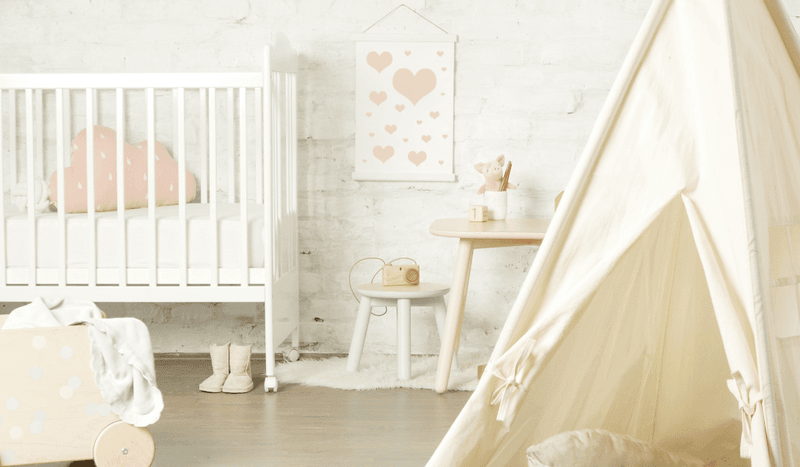
Postpartum Essentials for Mommy
After you give birth, you will need time to get back to normal. While you are in the hospital, you will likely be provided with the things you need to start recovering from birth. Depending on whether you have a vaginal or cesarean birth, these products might be different. The products provided by the hospital may not be the most comfortable or effective. Disposable postpartum panties will be necessary for at least a few days, and you will need pads for several weeks.
Cold packs can soothe the discomfort that comes after childbirth. Witch hazel pads can provide some relief after vaginal birth (or for those pesky pregnancy hemorrhoids). Peri bottles are a great way to keep everything clean as your body recovers from labor.
Nursing Essentials for Mommy
Breastfeeding can be difficult, and getting it just right will take time for Mom and Baby. In the meantime, your breasts may be sore, and your nipples can become dry and cracked. Breastfeeding mothers will also want to have some form of nipple butter or protectant on hand from the get-go.
As you near your due date, choose from among the many available options to find the product you feel most comfortable with. Nipple butters and creams like Lanolin can provide soothing relief and help them heal faster. Some women also find nursing shields a successful way to prevent or protect any irritation that results from nursing.
New moms will also need nursing pads. If you choose to breastfeed, you may need them for quite some time. Reusable nursing pads can be washed and reused, fitting comfortably in your bra. If you prefer not to breastfeed, you may still need them for a little while as your body adjusts to the change. Disposable nursing pads are a lot like panty liners; they stick to your bra and provide a barrier. When one is used, toss it in the trash.
Check out our list of 17 of the best products for postpartum care, breastfeeding relief, and stretch mark creams for more options!
Car Seat Safety
Having a good, new car seat is the most essential part of getting your baby home. Understanding car seat safety is going to be important for the next four years of your child’s life. One of the most terrifying parts of new parenthood is the drive home from the hospital, coupled with the realization that you are completely in charge of someone’s entire life. A good car seat is a good way to feel more in control.
Car seats should never be purchased second-hand. Some car seats are no longer safe as a result of recalls or changes in the way the seats are made. When you buy a car seat from someone else, you have no idea how they have treated the seat, if it is still completely safe, or if it has been in an accident.
Install your car seat as you begin nearing your due date. Due dates are an estimate, not an exact determination of when your baby will arrive. If you go into labor early, you certainly do not want to have to pause and figure out how to install the thing during early labor. About four weeks from your due date, go ahead and get the car seat safely installed according to the directions.
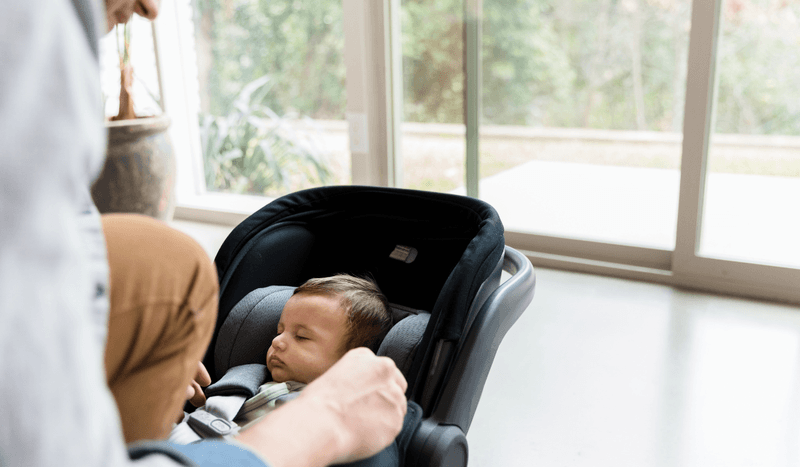
Car Seat Placement and Installation
The best place for a car seat is always in the center of the back seat. Depending on your car, you may use the existing buckles to hold it in place, or there may be extra hooks and latches. The car seat should face the back of the seat, and be firmly held in place.
Before you leave the hospital, most birthing centers have a nurse or technician go to your car with you to make sure you have installed the car seat properly. They may also help you put your new baby into the seat correctly:
- All buckles should be snapped.
- The chest piece should go across Baby’s chest, not over her belly or up into her throat.
- Tighten the straps so that you can slide two fingers between the strap and Baby’s shoulders. The straps should be loose enough you can fit your fingers, but not so tight the strap digs into Baby’s skin and neck.
Choosing the Right Car Seat
Car seats come in a variety of styles. Travel sets are great for parents on the go. The car seat snaps into and out of a piece that stays attached to the car, so you can carry your sleeping baby around without having to put her in and out of the car seat. Many of these systems have an accompanying stroller the seat pops into.
Other car seats are designed to adjust as your baby grows, so you do not have to buy a new, bigger design in a year. Some car seats are a reasonable price, while others are pretty expensive. Cost is not the focus; safety is.
What to Pack In Your Hospital Bag
As you are nearing your due date, what to pack in your hospital bag becomes a vital part of your planning. Start checking items off your list of what to pack in your hospital bag around your 34th week (in the eighth month)— nearing your due date but not all the way at the end of the third trimester.
You do not need a collection of rolling suitcases filled with everything from your swimsuit to your top five favorite books. Still, you will want comfortable clothes, something to do, and of course your important medical documents. Your hospital bag is effectively a collection of the most important things you need for a successful delivery and to successfully get back home with your new baby.
The length of your stay, how you plan to make it through labor, and other things specific to your very personal labor and delivery experience will impact exactly what to pack in your hospital bag.
Birth Plans
If you have created a birth plan, you may want to pack that in your hospital bag as well. However, your birth plan is best enacted when you talk to your obstetrician during your regular appointments as you near your due date. A birth plan is more like a birth preference. It’s a great way to collect a list of all of the things you would most like to see happen during labor, delivery, and birth.
In some cases, following a birth plan simply is not possible. For example, if you plan for a vaginal birth, your doctor will make every effort to make that happen. In emergencies, though, your natal team may have to leave the birth plan behind in order to do what is best to make sure you and your baby are healthy and taken care of.
Space Saving Moms
For light packers, the most important things to pack in your hospital bag are something for you to wear, something for your baby to wear, and a car seat. As long as you have those things, you will make it through the day or two hospital stay. Hospital robes are always available, but you may appreciate having some comfy old pajamas you can wear during recovery. Slippers are a great addition as well. If you have the space, they can save you from those classy no-slip hospital socks.
A few toiletries can make your stay more pleasant. Consider including travel-size soap, shampoo, deodorant, and a toothbrush and toothpaste so you can feel a little more like yourself after going through labor and getting a good nap.
Prepared for Anything Moms
However, there are a variety of other items that can make your stay more comfortable and more pleasant. If you are going to be induced, have experienced complications in the past, or have reason to anticipate any complications that might require a longer stay, you may want to pack for a few more days than normal. Of course, your partner can always pick up whatever you might find yourself in need of— but you may also want the assurance of your partner at your side until all three of you walk out of the hospital together
Distractions
Many women find a collection of music a great way to distract from labor pains (and the potentially many hours labor might take). Depending on what you (and your partner) have planned to make it through contractions, you might want massage lotions or stress-relief products. Meals are often provided, but you (or your partner) may want a few snacks.
If you are induced, you may have several hours before much starts happening. A book or e-reader, a few magazines, or something else you enjoy that requires low attention while still keeping your mind occupied can be helpful.
As you begin the postpartum recovery process, you may find these things are nice to have around while Baby is napping – of course; we also recommend you take advantage of your baby’s nap times to get in a little nap of your own, at least until the night time feedings decrease.
Postpartum and Breastfeeding Products
If you have a favorite brand or simply prefer to use postpartum products that are different from those provided by the hospital, you should pack a few days of these as well. Bring any breastfeeding accouterment you plan to use or need help understanding. A lactation consultant will teach you how to get started with the best way to nurse your baby, and they can generally help you figure out how to work your breast pump and any other nursing products you need help getting the hang of.
Your hospital may provide a type of nipple cream, but they probably only stick to one type (often Lanolin). If you have a different, preferred nipple butter, throw that in your hospital bag along with nursing pads and a nursing bra. Skin-to-skin contact is great in the first few days, but you should also know how to work your nursing bra. It is a little different to get your shirt and bra managed trying items out at home compared to when a tiny human you created and gave life to is screaming at you to move faster; dinner time is now.
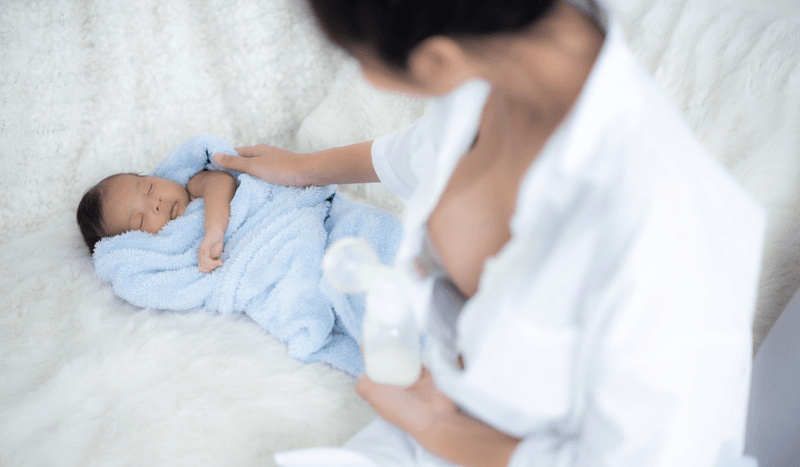
What to Pack in Your Baby’s Hospital Bag
What does Baby need at the hospital? If you already know you intend to formula feed and have a specific brand in mind, bring a can of formula and some bottles. Changing formula brands can be tough on a new baby’s stomach, so sticking to the same kind is good for your baby.
Most natal units will provide a few days of diapers and wipes, a garment of some sort (for example, a wrap-around shirt with snaps; the cuffs may fold over Baby’s hands to prevent facial scratching. These help keep your baby warm and are easy to get on and off), a blanket, and a hat. However, this can vary depending on the hospital.
Pre-pack your diaper bag as well as your hospital bag, and bring that with you as well. Realistically, multiple bottles and cans of formula will not generally be in there, but otherwise, what you can expect to keep in a diaper bag is roughly what your baby will need for her time at the hospital. Your baby will need the all-important, extra cute “home from the hospital” outfit.
Extra diapers and wipes are never a bad idea. Other important things include diaper cream, a blanket (thickness dependent on the weather in your area on your baby’s birthday, of course), and a few burp cloths.
For More Information
Use this complete list of things you should pack in your hospital bag to make sure you have all the things you need to make your hospital stay as easy as possible. The third trimester is no shorter than the other two (usually), but it can fly by in a rush. Enjoy the pregnancy nesting experience. Including your partner can make them feel more prepared and connected to the impending member of the family as well. Ultimately, you should make the most of that time by preparing your home and yourself for bringing home your perfect newborn.
The Woman’s Clinic is a participant in the Amazon Services LLC Associates Program, an affiliate advertising program designed to provide a means for sites to earn advertising fees by advertising and linking to Amazon.com based on our patient’s needs and desires.
Contact The Woman’s Clinic today for more information about getting ready for a new baby or any other obstetric or gynecological questions; contact The Woman’s Clinic today!
